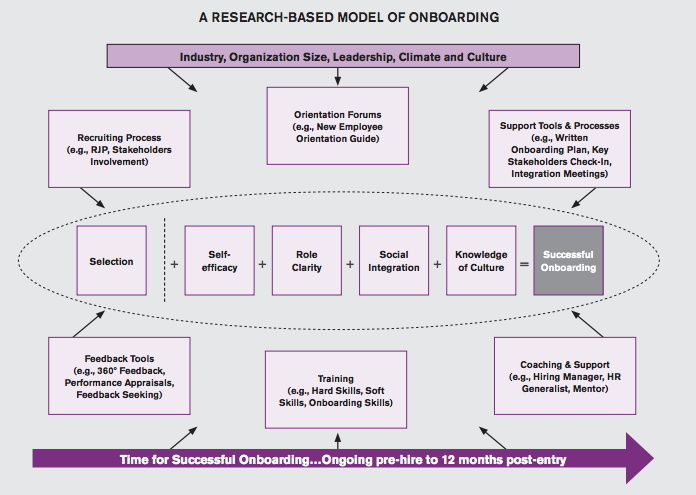One of the great things about providing a service for so many organisations (and the employees of those organisations) is that we get to hear first-hand feedback about what HR Professionals and the teams they serve want and need to make work better. What has become abundantly clear, and increasingly critical in the world of work, is the importance of the onboarding process in setting up new or transferring employees to understand, enjoy and succeed in their new role. We recently proposed that 'how you do onboarding is how you do everything,' and that got us thinking... What would be the best way for us to walk our talk, to put our money where our mouth is and to really make a difference in the world of work? The answer is that we have created a fantastic new Employee Onboarding Software Solution and made it FREE (for a limited time). That means that it is easier than ever for HR Professionals and the organisations they serve to harness the power of Digital HR to transform onboarding from good to great. If you're still not convinced that the onboarding process is probably THE most important aspect of the employee lifecycle, let's dive a little deeper.
Research Based Evidence
According to Talya Bauer, Ph.D., 'research and conventional wisdom both suggest that employees get about 90 days to prove themselves in a new job,' and that 'the faster new hires feel welcome and prepared for their jobs, the faster they will be able to successfully contribute to the firm's mission.' On the flip side, new employees often take even less time to decide whether their new employer is a worthwhile investment of their time and energy in the long term. So how can HR Professionals and the organisations they serve ensure that the first 90 days are maximised for the benefit of both the individual and the organisation?
Bauer's work with organisations is conducted through the lens of of academic research. She recommends research based best practice be applied to organisational processes, including onboarding. Bauer has seen a gradual change of perspective in both academic institutions and the corporate arena as the nature of work and workplace evolves. Academic researchers and those responsible for onboarding within their organisations understand that the best programs are those that are based on solid research and also make sense in practice.

The above diagram is based on research outlines in Bauer's best practice document for SHRM, 'Onboarding New Employees: Maximizing Success,' about factors that play a role in the successful onboarding of new employees. The model summarises both new employee adjustment and outcomes of successful crossboarding.
Best Practices for Onboarding
In 'Onboarding New Employees,' Bauer clearly outlines research based best practices for onboarding as follows:
-
Implement the basics prior to the first day on the job.
-
Make the first day on the job special.
-
Use formal orientation programs.
-
Develop a written onboarding plan.
-
Make onboarding participatory.
-
Be sure your program is consistently implemented.
-
Ensure that the program is monitored over time.
-
Use technology to facilitate the process.
-
Use milestones, such as 30, 60, 90 and 120 days on the job—and up to one year post-organisational entry—to check in on employee progress.
-
Engage stakeholders in planning.
-
Include key stakeholder meetings as part of the program.
-
Be crystal clear with new employees in terms of:
-
Objectives.
-
Timelines.
-
Roles.
-
Responsibilities.
-
Four Distinct Levels of Onboarding
As part of her research, and her experience working in the field, Bauer has identified four distinct levels of onboarding, ordering them from least to most effective:
-
Compliance: at this level, HR teaches new employees about legal and policy-related issues.
-
Clarification: HR makes sure that new employees understand their new role along with the related expectations.
-
Culture: HR focuses on exposing new hires to the organisational values and norms.
-
Connection: HR connects new hires to personal relationships and information networks.
Using technology to transform your organisation to an environment built on a foundation of digital HR can most certainly streamline the administrative process. It is always going to be a better option, especially for Millennials, to offer newbies a digital HR portal to find the information they need and complete the compliance required of them. Giving new hires mountains of information to memorise or piles of paperwork to complete is SO last century and the last century ended almost two decades ago.
However, as we have always advocated, HR technology cannot replace the type of face-to-face connections that will elevate your onboarding experience to a level that forges strong bonds and ensure that employees want to stick around beyond their first 90 days. We want to make it as easy as possible for HR Professionals to operate at the culture and connection end of the onboarding process. That's why we're giving you the opportunity harness the power of digital HR FOR FREE. Now you can use HR onboarding software to improve your systems and processes and make the best first impression you possibly can in your organisation. Now, you can use technology as the stepping stone that will give you and your teams the time to spend building face-to-face connections with your most important assets - your people.
Accessing the Employee Onboarding Software Solution for FREE is easy, simply click on the button below to book a free demonstration and get started!
Image Credit: Onboarding New Employees: Maximizing Success by Talya Bauer


